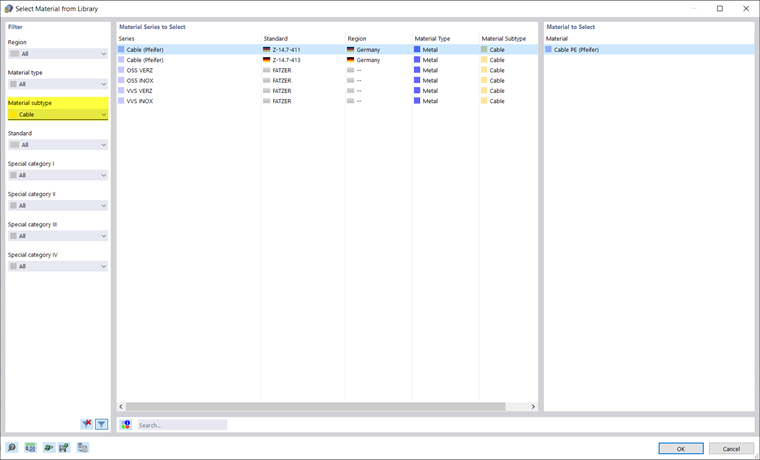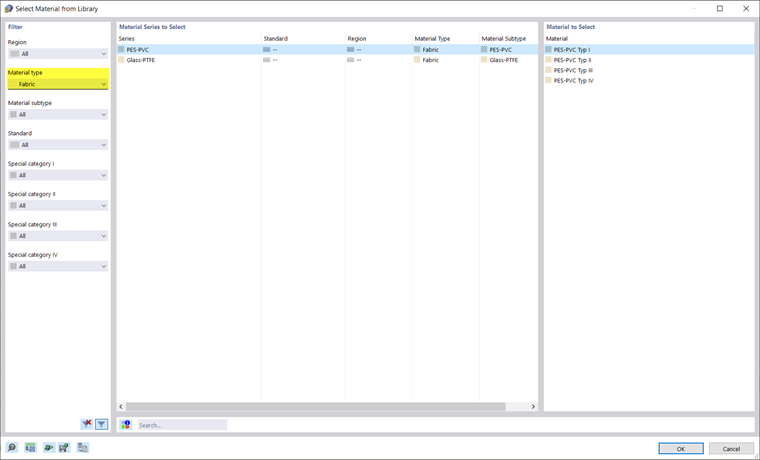As already explained in Chapter Form-Finding Process, the form-finding process is, in principle, completely independent of stiffness of the materials used. This means that a concrete or steel surface has the same shape under the same boundary conditions and the same prestressing. However, please note that the structural stiffness can generally have an influence on the shape.
The shape of a flexible structure results unambiguously from the defined boundary conditions and the equilibrium prestress, or it is determined by the boundary conditions and the equilibrium system of prestress and loads (overpressure, self-weight).
Cables
A cable is a member type in RFEM. Cables only absorb tension forces. Thus, any chain of cables can be determined by an iterative calculation according to the large deformation analysis considering longitudinal and transversal forces. Cables are suitable for models where large deformations may occur with the corresponding changes of internal forces and moments.
Section
There are many cross-sections stored in our database. The Cross-Section Library also includes predefined cross-sections for cable, which can be displayed using the Shape → Cables filter.
Cable Material
The properties of many materials are stored in an extensive database. For cables, there are also predefined material properties in the Material Library, which can be displayed using the Material Subtype → Cable filter.
The properties of the respective material can be checked as usual. Only the basic cable properties are known. Strengths are not stored for these materials.
The design can be carried out using the Stress-Strain Analysis add-on. You can find useful tips for the design in this technical article.
Membrane
For lightweight plate structures, there are many technical membranes.
- Polyester fabric (PES) coated with polyvinyl chloride (PVC) → PES/PVC
- Polyester coating covered with polyvinyl chloride (PVC)
- Glass fabric coated with polytetrafluoroethylene (PTFE) → glass/PTFE
- Polyester fabric (PES) coated with polyolefin
- Polyester fabric (PES) coated with fluoroplastic
- Glass fabric coated with silicone
- Open and closed mesh fabrics
- Uncoated and natural fabrics
- Ethylene-tetrafluoroethylene foils → ETFE
These materials are selected for each construction task according to the various properties for the respective project. With regard to the structural analysis, all products have different load-bearing properties, some of which can vary with each production batch.
Thickness
Thicknesses are required to define surfaces. The thickness properties are included in the stiffness of the surface. When working with fabric materials, the constant thickness is standardized to a reference thickness of tref = 1 mm. This reference thickness is entered in the material properties.
Membrane Material
The properties of many materials are stored in an extensive database. There are also predefined material properties for membranes in the Material Library, which can be displayed using the Material Type → Fabric filter.
The properties of the respective material can be checked as usual. The basic membrane properties are known. Strengths are stored for warps and wefts.
The design can be carried out using the Stress-Strain Analysis add-on. You can find useful tips for the design in this technical article.





